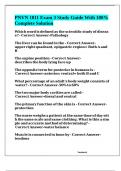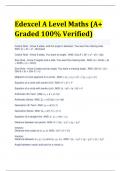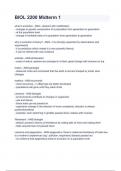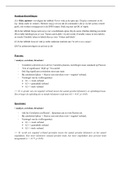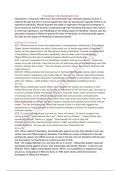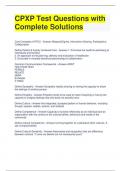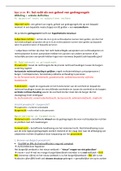Spontaneity, entropy, and free energy 2
Entropy and the second law of thermodynamics
Review of 1st and 3rd law of thermodynamics
first law of thermodynamics: energy cannot be created nor
destroyed
third law of thermodynamics: the entropy of a perfectly
ordered crystal at absolute zero (0 kelvin) is zero.
Second law of thermodynamics
- we know that change in enthalpy ( h) and change in
entropy ( s) determine spontaneity of a process
1
- g is what we use to define the combined contribution
from h and s DISPERSION of Energy.
-
TS Molecular Randomness
G = H -
enthalpy: heat flow at constant pressobe
- all quantities in above equation pertain to system
- these changes lead to change in entropy of the
universe
- 2nd law of thermodynamics: for any spontaneous process,
the entropy of the universe increases
- remember: entropy is s. Basically, the universes
randomness increases
qualitative understanding of 2nd law of thermodynamics
- the 2nd law tells us that all processes occur
spontaneously in the direction that increases the total
entropy of the universe
- ie: Suniverse O
- since universe consists of system and surroundings, to
predict spontaneity of a process, consider 2 enthalpy
changes — the system and the surroundings.
- the criterion for spontaneous process is based on
sum of 2, called entropy of universe:
, S =
0S - S
suppounding
system
- 2nd law provides clear cut criterion for spontaneity.
Direction of spontaneous change always determine by sign
of total entropy change:
T
sunirease:
5 universe =
-
suniverse =
0
quantitative aspect of 2nd law of thermodynamics
- general equation for entropy change when a process/
reaction occur under constant temp:
sig, heat flow at constant temp: H
system T
- this is general equation for rxns w/ heat flow at
constant t. Applies to processes such as phase
change and heat flow from system to surrounding
- subscript t is reminder that equation is restricted to
processes that occur at constant temp. B/c q is an
energy term, units of s are energy/temperature, or j/k
entropy changes for phases changes
- phase changes take place at constant temp, absorbing
or releasing heat in process
- change in entropy for this type of processes can be
calculated using equation above
- when more ordered phase changes to less ordered one,
entropy change is positive. For given substance,
entropy increases as substance changes from solid to
liquid to gas
Entropy and the second law of thermodynamics
Review of 1st and 3rd law of thermodynamics
first law of thermodynamics: energy cannot be created nor
destroyed
third law of thermodynamics: the entropy of a perfectly
ordered crystal at absolute zero (0 kelvin) is zero.
Second law of thermodynamics
- we know that change in enthalpy ( h) and change in
entropy ( s) determine spontaneity of a process
1
- g is what we use to define the combined contribution
from h and s DISPERSION of Energy.
-
TS Molecular Randomness
G = H -
enthalpy: heat flow at constant pressobe
- all quantities in above equation pertain to system
- these changes lead to change in entropy of the
universe
- 2nd law of thermodynamics: for any spontaneous process,
the entropy of the universe increases
- remember: entropy is s. Basically, the universes
randomness increases
qualitative understanding of 2nd law of thermodynamics
- the 2nd law tells us that all processes occur
spontaneously in the direction that increases the total
entropy of the universe
- ie: Suniverse O
- since universe consists of system and surroundings, to
predict spontaneity of a process, consider 2 enthalpy
changes — the system and the surroundings.
- the criterion for spontaneous process is based on
sum of 2, called entropy of universe:
, S =
0S - S
suppounding
system
- 2nd law provides clear cut criterion for spontaneity.
Direction of spontaneous change always determine by sign
of total entropy change:
T
sunirease:
5 universe =
-
suniverse =
0
quantitative aspect of 2nd law of thermodynamics
- general equation for entropy change when a process/
reaction occur under constant temp:
sig, heat flow at constant temp: H
system T
- this is general equation for rxns w/ heat flow at
constant t. Applies to processes such as phase
change and heat flow from system to surrounding
- subscript t is reminder that equation is restricted to
processes that occur at constant temp. B/c q is an
energy term, units of s are energy/temperature, or j/k
entropy changes for phases changes
- phase changes take place at constant temp, absorbing
or releasing heat in process
- change in entropy for this type of processes can be
calculated using equation above
- when more ordered phase changes to less ordered one,
entropy change is positive. For given substance,
entropy increases as substance changes from solid to
liquid to gas

